A light beam illuminated the tear stretching across the bag net. Embers from the cigarette pursed between Sak Sao’s lips crumble onto his pant leg, his hands too busy stitching the rip to brush them off.
“Hurry up,” said Sue Bu, seated next to him holding a headlamp. “We’re losing fish.”
Within minutes the dai platform was operational, with the net back in the Mekong River. These fishermen work around the clock as fish migration season nears an end, marking another year of low catches.
“Fish are declining every year. Even peak weeks and months no longer have good catches,” said Sothon Chet, who has been a dai fisherman for eight years. “I am not hopeful because if peak periods are bad, then what will low periods be like?”
Fish abundance is affected by water flow and in just over a decade, five of the Mekong’s ten lowest annual water flows have occurred. 2020 holds the record for the basin’s lowest flows, while last year ranked ninth.
Researchers and aquatic ecologists are searching for sustainable solutions to mitigate the causes and effects of low flows. While some ideas to safeguard Cambodia’s fisheries and farmlands are promising, most have only seen small-scale implementations, leaving farmers reliant on climate-dependent, traditional agriculture techniques.
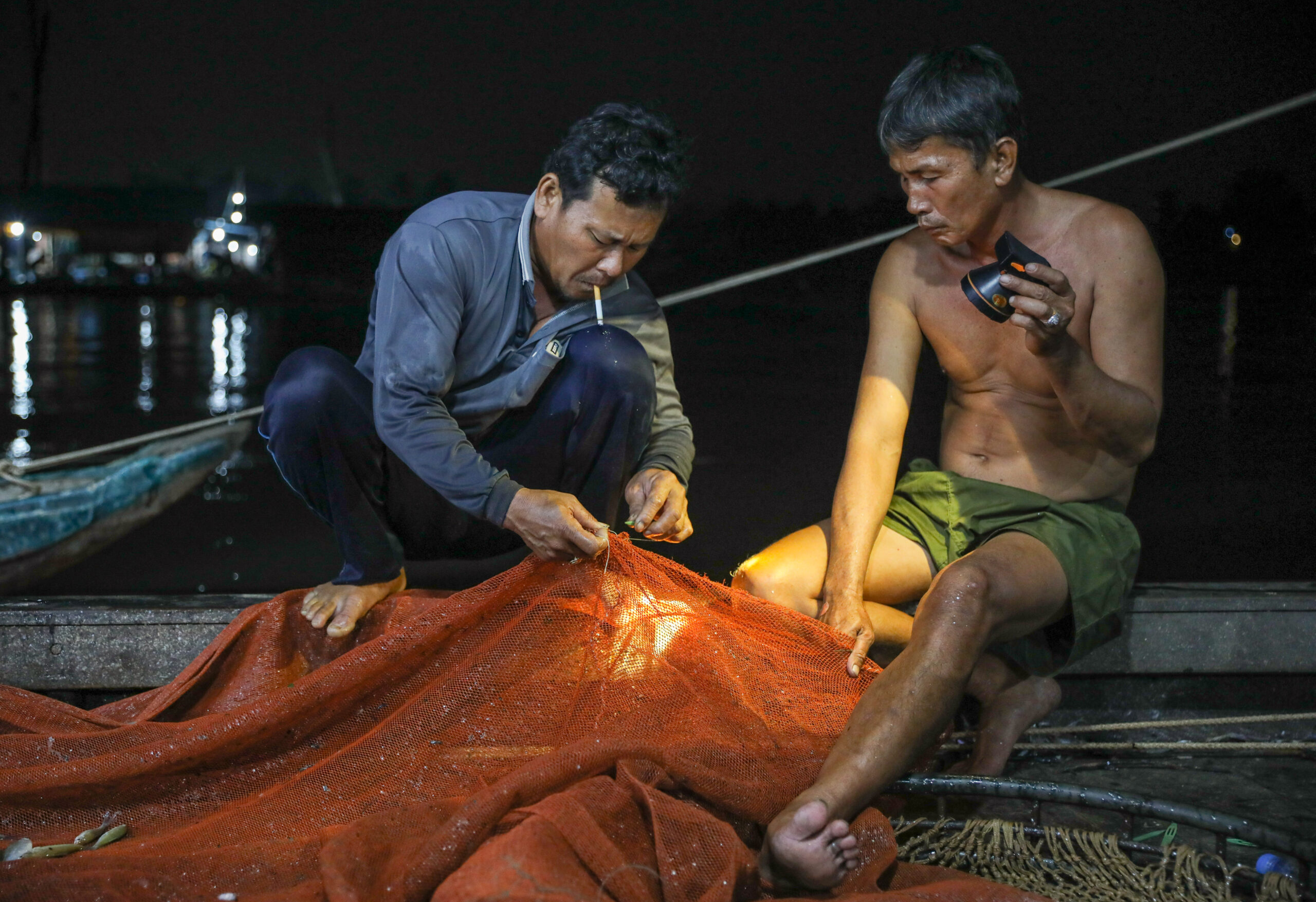
“We want to understand the factors — like climate change, dams, habitat loss and overfishing — affecting fish migrations,” said Bunyeth Chan, a postdoctoral researcher with Wonders of the Mekong, a USAID project. “By understanding biological behaviour and the way migration patterns change, we can initiate management programs and policies to conserve these species.”
By sampling the catches from the dai platform, Chan hopes to confirm the data recorded by an underwater acoustic monitoring system.
Two of these systems on the first and last row of dai platforms use sound waves to monitor the density of fish. By surveying alongside the system, researchers will be able to elaborate on this fish density with specific species and fish health.
“This data will help us understand which factors affecting the water flow play the largest role, which will help us determine river-wide trends,” Chan said.
Dai is Vietnamese for “bag” and dai fishing refers to “stationary trawl” or “stationary bag net” fishing.
There is one main dai fishery in Cambodia, which consists of 15 rows with three to five platforms in each row. According to Chan, this dai fishery was an ideal location for the fish migration study because bag nets “indiscriminately fish,” meaning the net catches anything and everything it comes across.
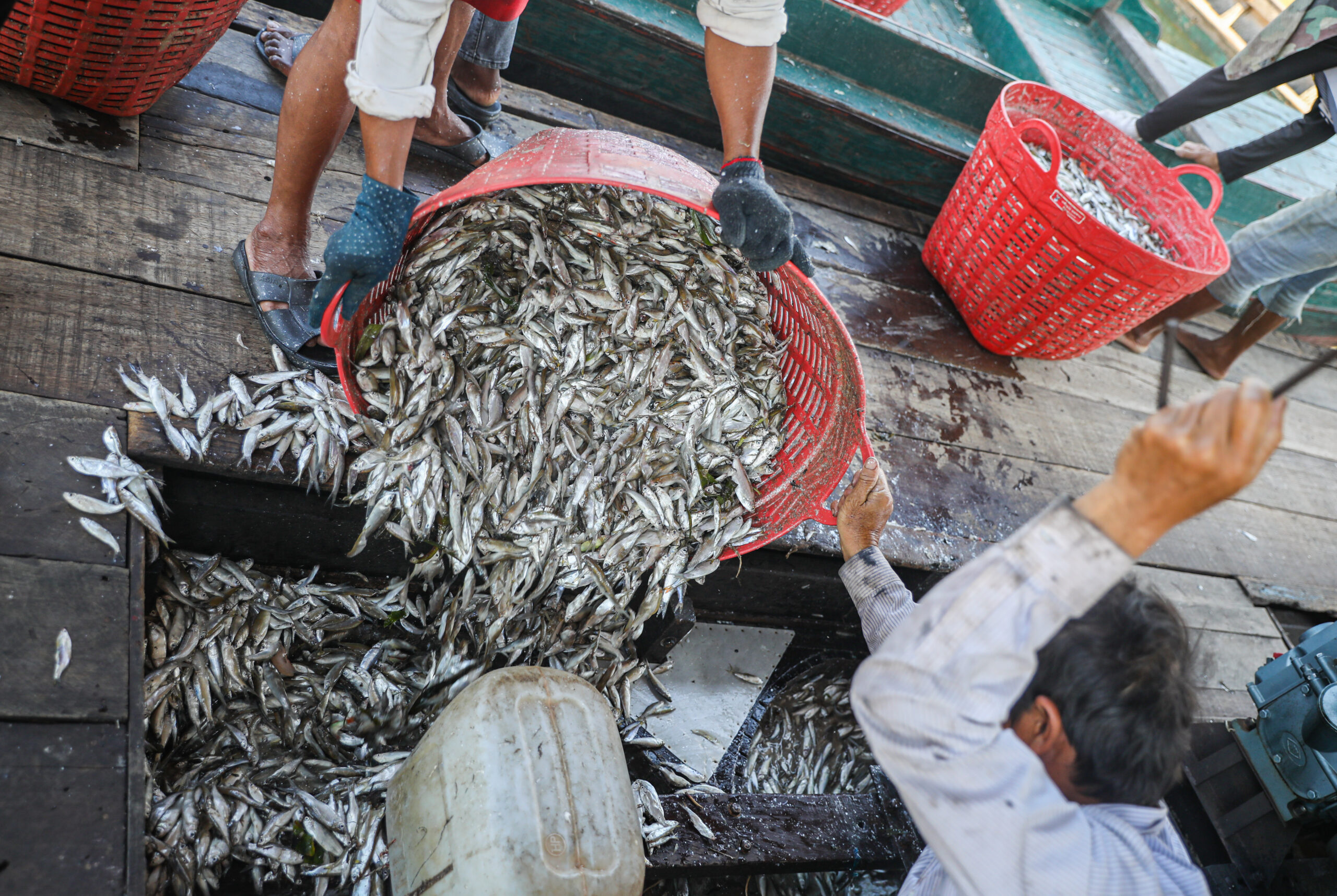
In 24 hours, researchers documented nearly 30 different fish species.
“These fish are the life and livelihood of Cambodians and many other people across the region,” Chan said. “We are highly dependent on the fish from the Mekong.”
The Mekong flows through China, Myanmar, Thailand, Laos, Cambodia and Vietnam. As a tropical system, the river is influenced by a monsoonal climate, with a dry and wet season. This seasonal back-and-forth is referred to as a “flood pulse.”
“The flood pulse connects habitat between the water and the land. We typically think of these as separate systems, but the flooding connects the two which explains why the Mekong is one of the most productive water systems on the planet,” said Gordon Holtgrieve, an aquatic ecologist and associate professor at the School of Aquatic and Fishery Sciences at the University of Washington.
The weakening water flow is what Chan said is causing recent low fish catches. Wet seasons in 2021, 2020, 2019, 2015 and 2010 hit record lows, when the water was expected to rise and create fish habitat.
The Mekong River Commission considers these findings “significant,” confirming previous technical reports had found a “significant correlation between hydrology (flow and water level) and fish catches.”
“These low flow years are anomalies,” said the MRC Secretariat in a written statement to the Globe. “This is because they are affected by climate change… that has caused low rainfall and short duration of the flood season.”
The Ministry of Agriculture, Forestry and Fisheries noted a 10.5% decline in 2019 and a nearly 23% decline in 2020 in the total value of fish production, when compared to 2018.
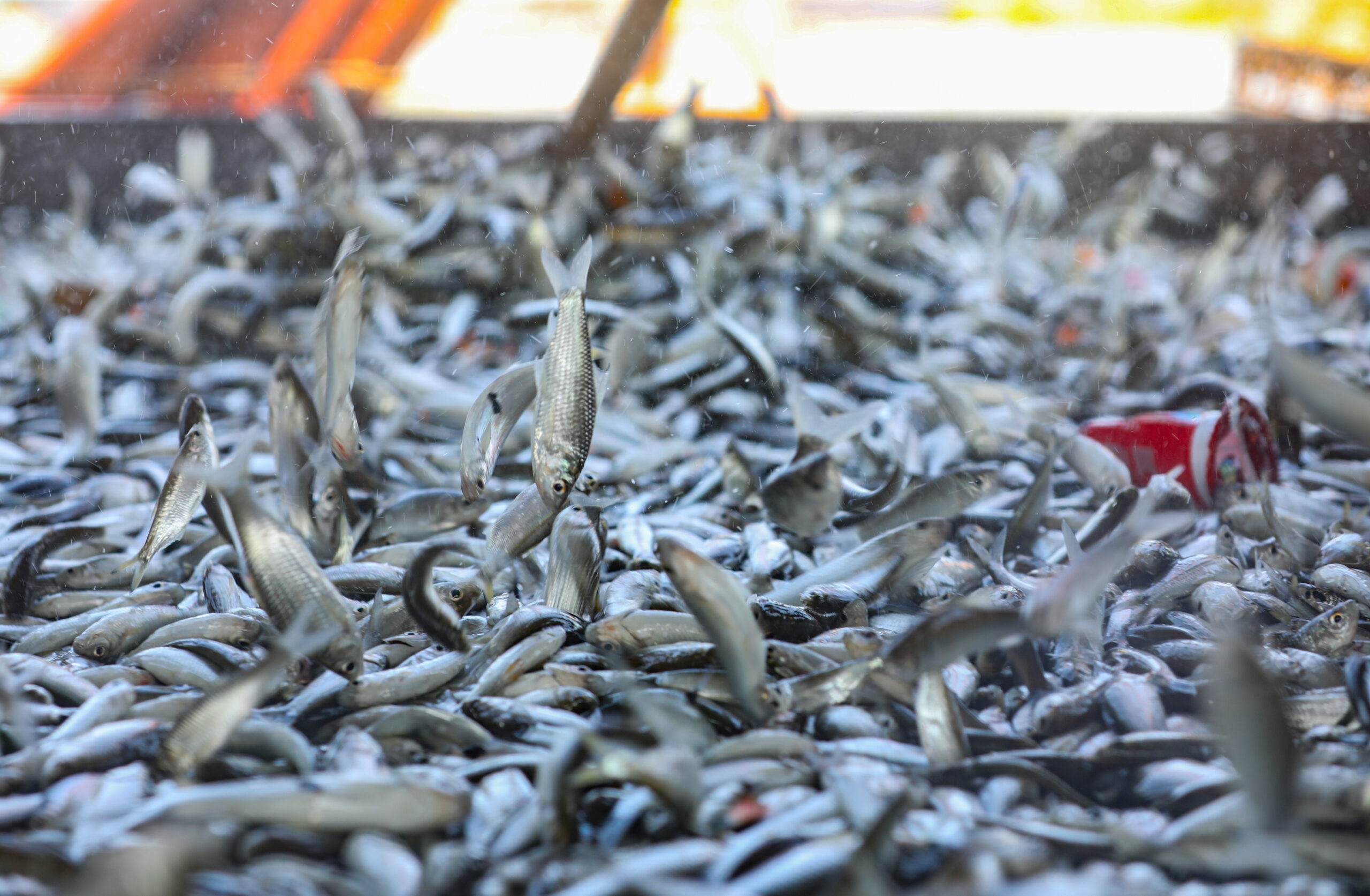
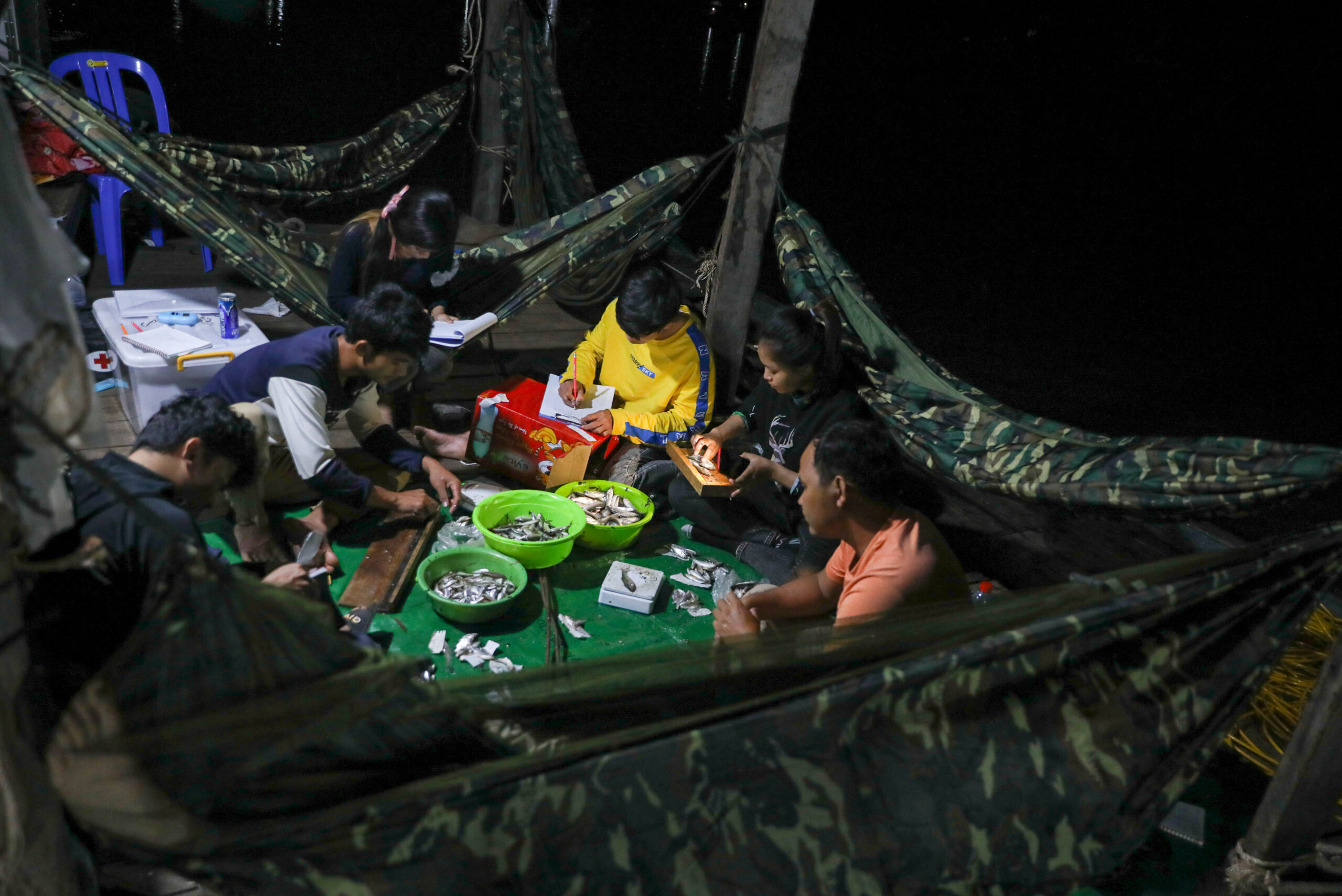
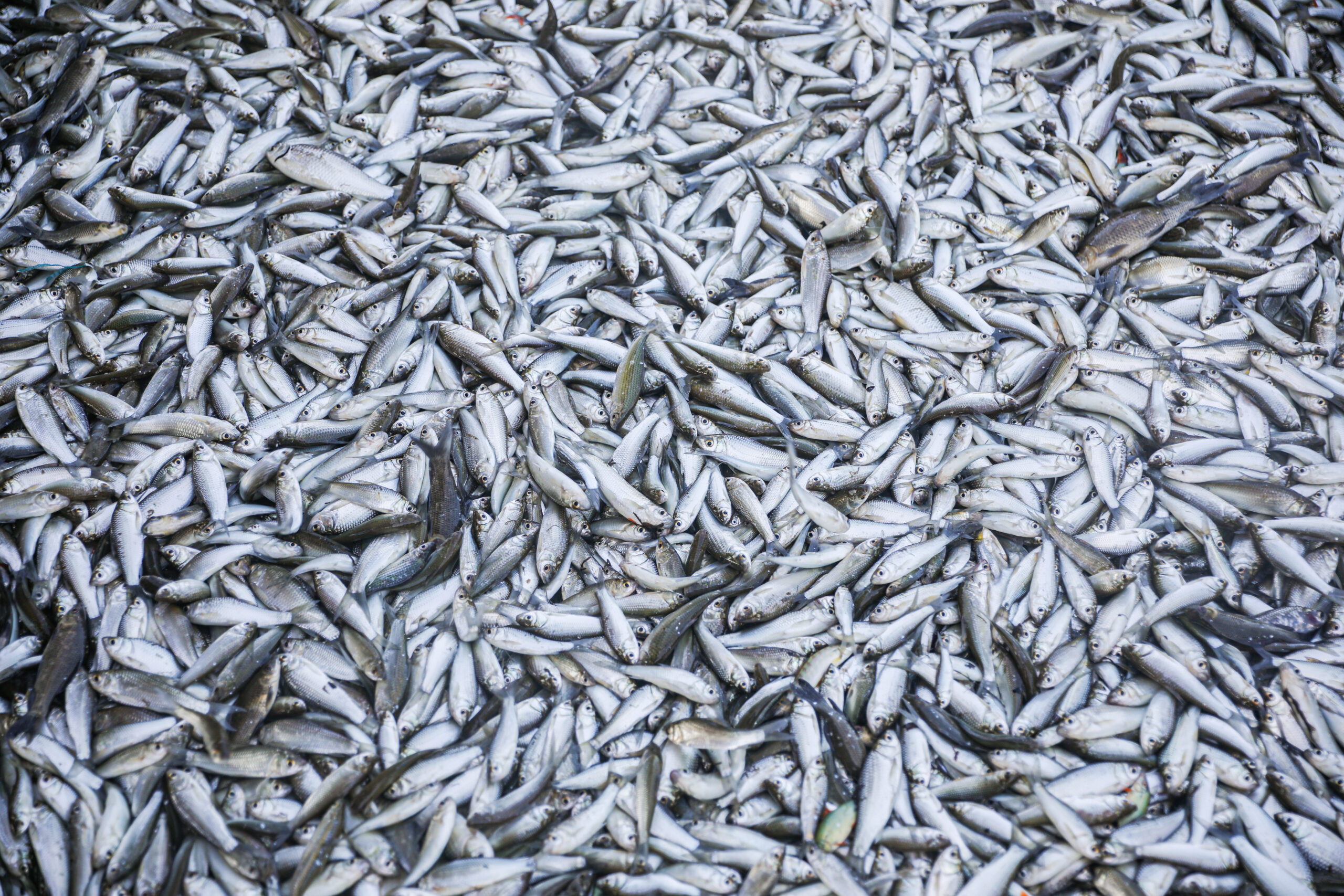
The lack of rain, which researchers say contributes to low flows, also has directly affected agricultural productivity in Cambodia. Especially since a significant portion of the Kingdom’s farmers rely on traditional agriculture methods, which are dependent on climate and weather conditions.
The flood pulse often brings nutrients to the land around the basin, as well as fish which grow in abundance within the flooded vegetation. The receding water during dry season leaves productive farmland and fish-stocked lakes.
“The way Cambodians farm is at the mercy of nature,” said Or Channy, executive director of the Cambodian Rural Development Team, a local NGO. “The livelihoods of entire communities depend on the weather and climate, which is a very dangerous situation.”
Analysis of data from the Mekong River Commission by The Stimson Center’s Mekong Dam Monitor found half of the lowest annual flow years on record have taken place since 2010.
“Annual flow can give us an indicator into the climatic conditions of a river system,” said Brian Eyler, Southeast Asia program director for The Stimson Center, a US think tank. “While looking at annual flow rates, if we assume water storage is somewhat minimal… then changes to annual flow are most likely related to rainfall and climatic conditions.”
In 112 years of record keeping at a discharge gauge in Stung Treng in northeast Cambodia, 2021 had the ninth lowest annual flows.
Eyler notes landscapes often go through “long periods of drought, regardless of climate change” and said further study is needed before climatic conditions can be cited as the primary cause of this drought.
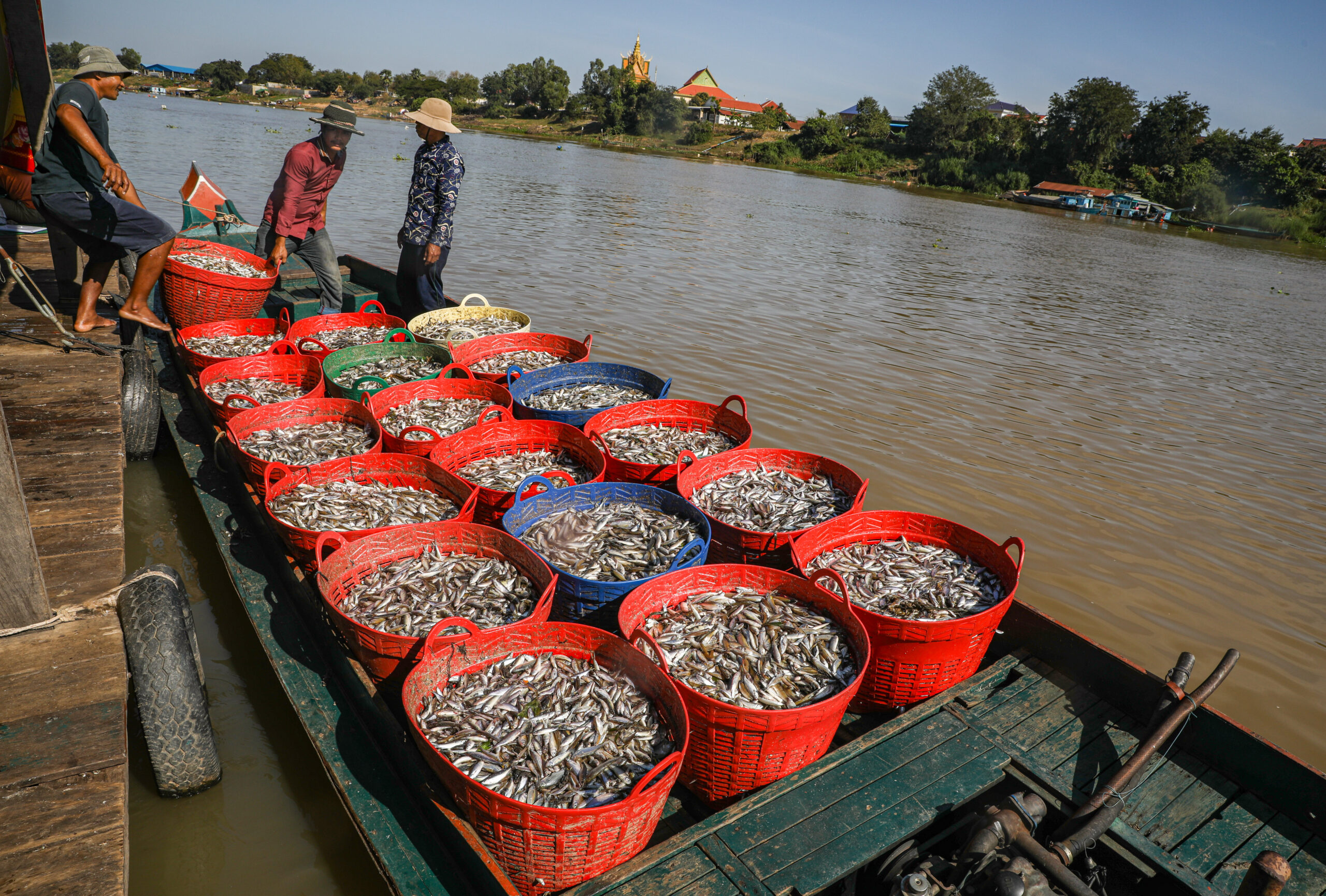
With the major drops in annual flow, however, Eyler said “we can assume that is related to a lack of rainfall” because “the distance from average is getting so large it can’t just be caused by hydropower operations.”
While climatic and river conditions are changing, hydropower production is often consistent, Eyler said.
“Current dams are being operated in a way to maximise hydropower production regardless of rainfall, regardless of the climate conditions playing out in the basin,” Eyler said. “Dams are producing as much electricity and using as much water during a wet year as it is during an anomalously dry year.”
In response to the consecutive years of low water flow, the Mekong River Commission issued a regional call for better river management in January 2022.
In the statement, An Pich Hatda, chief executive officer of the commission, suggested exploring coordinated reservoir and hydropower dam management between countries.
“The goal is to optimise energy production from a basin-wide perspective and reduce adverse impact on people and the environment,” said the MRC Secretariat in a written response to the Globe.
Hatda also suggested the creation of a notification system for unusual water level fluctuations. Hatda stressed cooperation was needed, not just from China, but from all MRC member countries to address these issues.
“The joint notification mechanism on unusual water level fluctuations helps inform all the Mekong countries of the emerging flood and drought conditions – or the unusual rise and drop of the water levels – and facilitate adaptation and if needed, emergency responses,” said the MRC Secretariat.
Gary Lee, Southeast Asia program director for International Rivers, said climatic conditions affecting the river are “exacerbated by increasing modification of the river basin system through developments.”
With the Mekong and its tributaries flowing through a half-dozen countries, the effect of hydropower dams can be felt for hundreds of kilometres downstream.
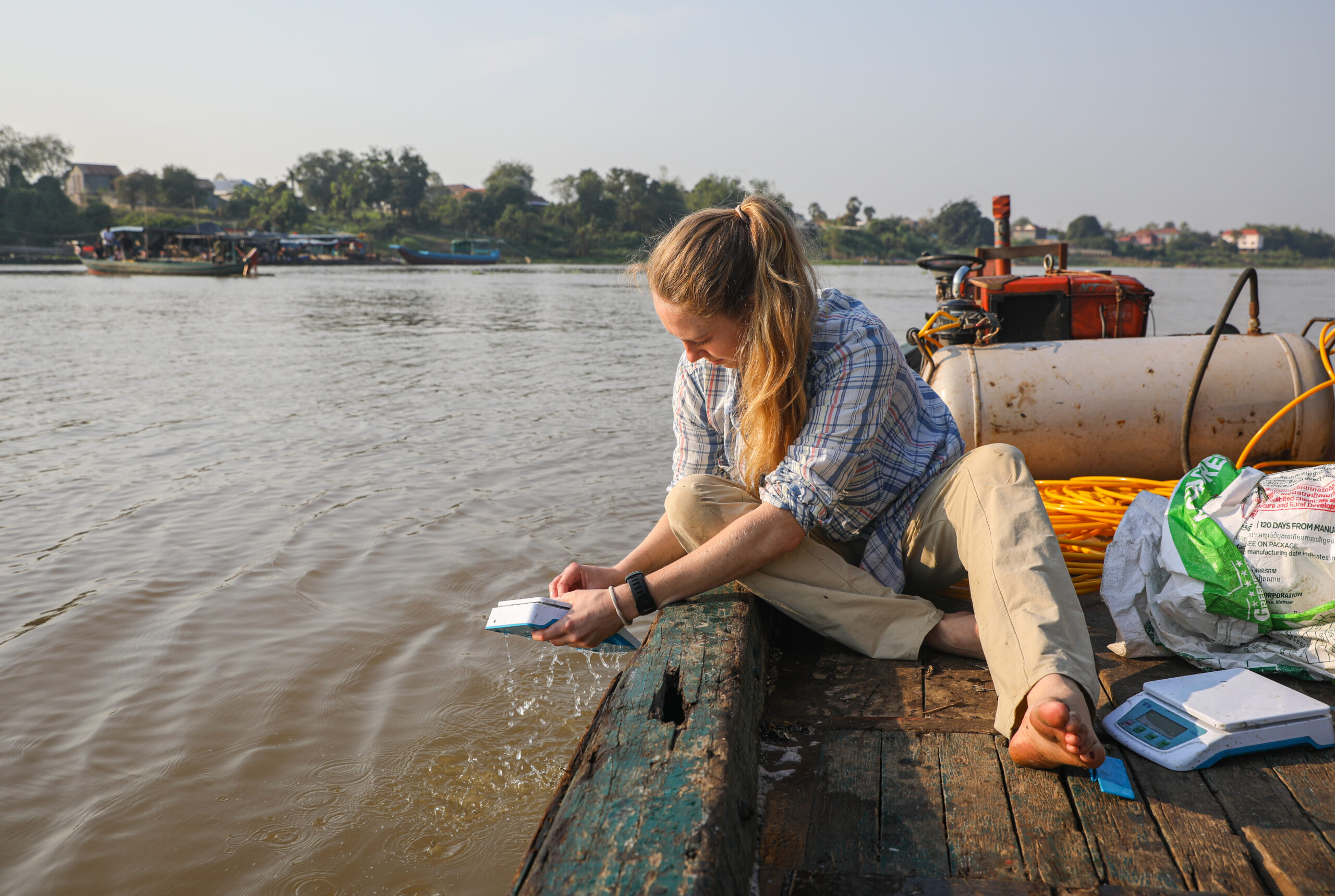
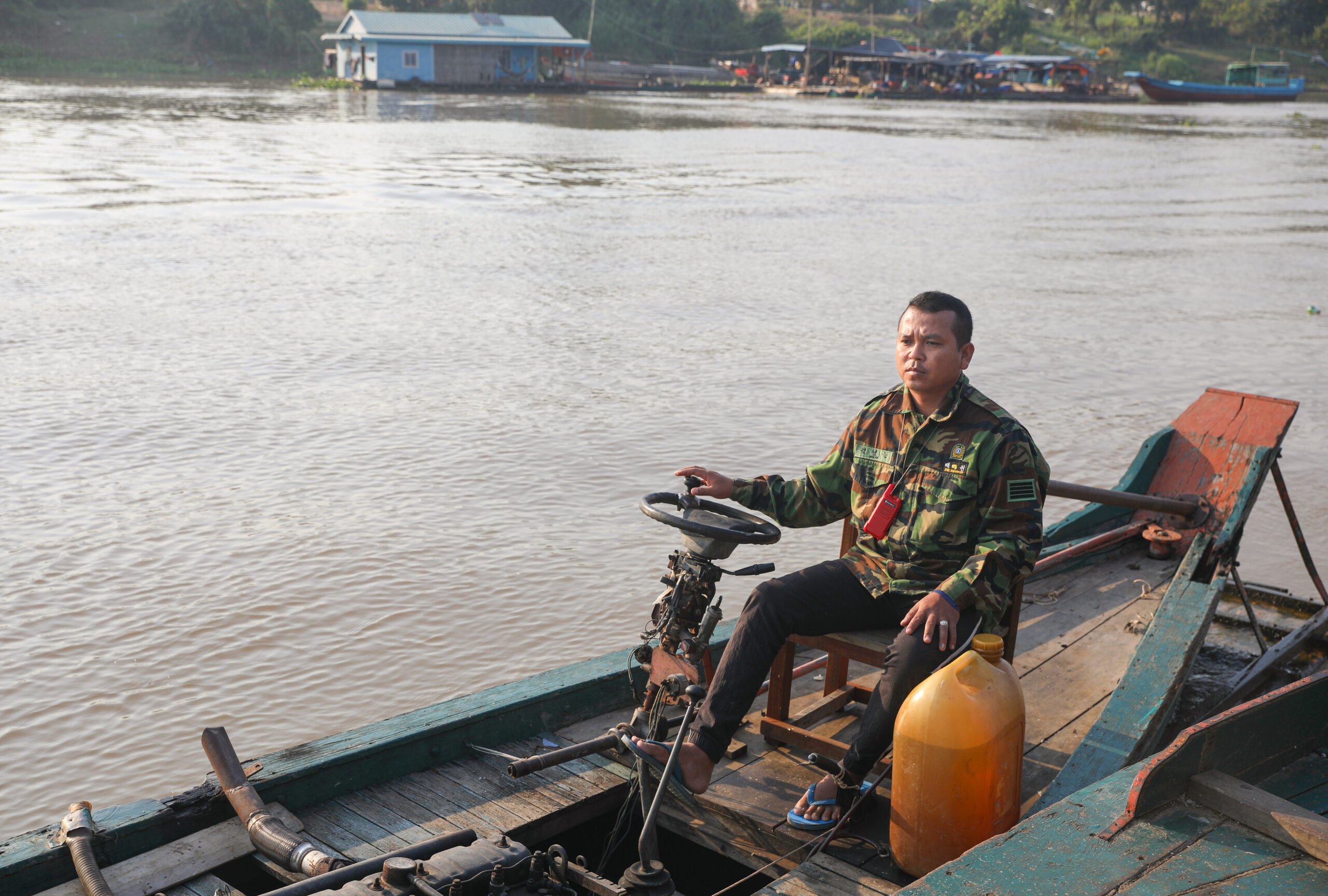
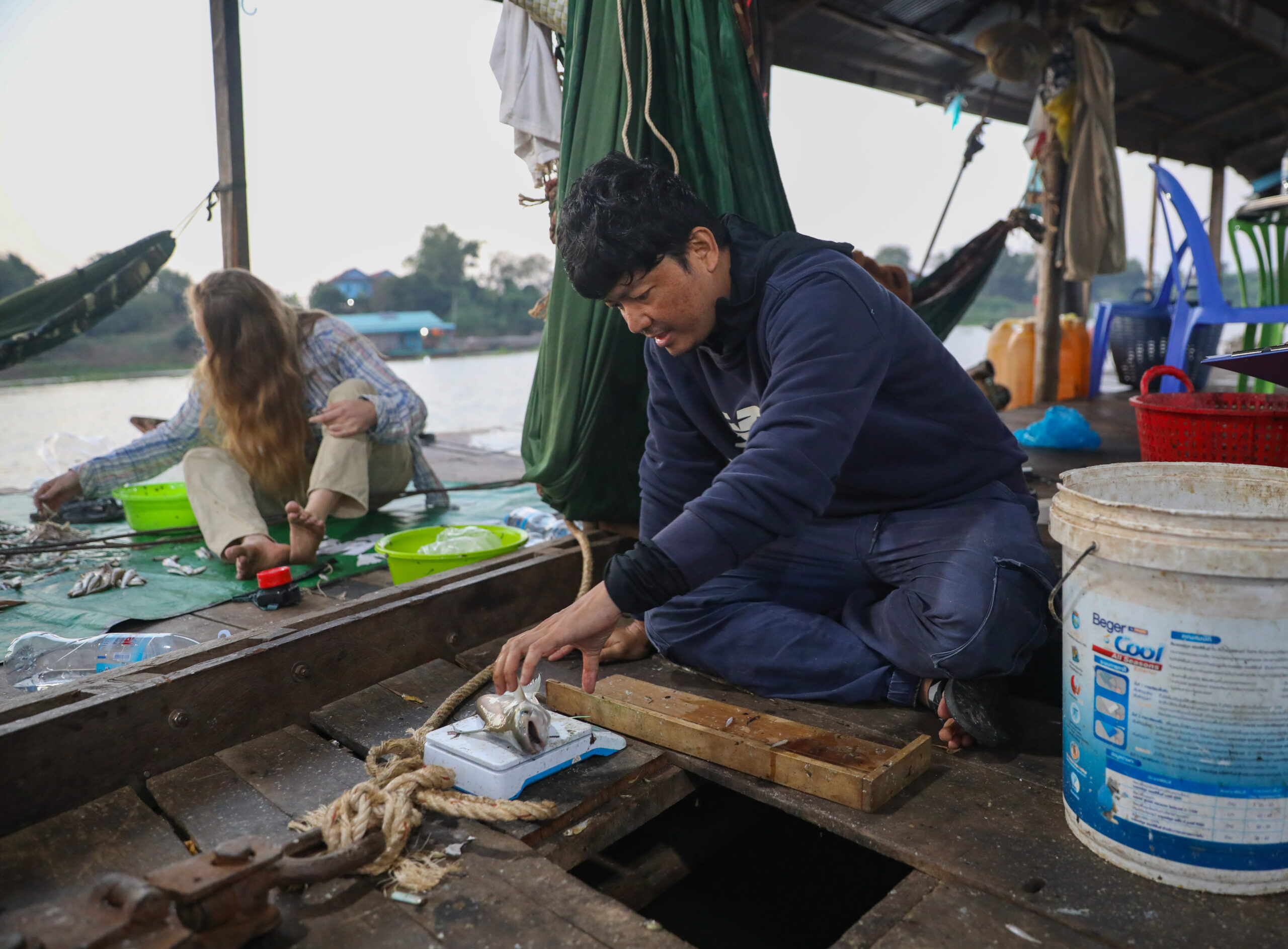
“The term ‘unprecedented’ has been used a few years in a row now in terms of record low flows in the Mekong Basin,” Lee said. “There are obvious changes in weather patterns as well as extreme events, but this is also being exacerbated by what humans are doing to the ecosystem.”
The Ministry of Mines and Energy approved Cambodia’s 10-year energy master plan in 2020, which did not include any new hydropower dams on the Mekong mainstream. The decision followed electricity shortages in the Kingdom, which were attributed to low water levels affecting hydropower generation.
This 10-year moratorium on new mainstream dams was reaffirmed by minister of environment Say Samal during a speech at the COP26 environmental conference in Scotland in 2021.
A coalition of organisations, including Oxfam in Cambodia, the Fisheries Action Coalition Team and the 3S Rivers Protection Network, issued a joint statement calling Samal’s affirmation a “positive sign that would crucially contribute to addressing the increasing concerns over the current negative alteration of the Mekong River and its ecosystem sustainability.”
In January, the Council for the Development of Cambodia greenlighted the Upper Tatay Dam in Koh Kong. While the 150-megawatt hydropower dam will not be built in the Mekong Basin, decision indicates the Kingdom’s continued interest in developing hydropower.
Neither the plan, nor Samal, clarified whether the moratorium applied to dam construction on tributaries to the Mekong. The three major tributaries in Cambodia are the Sesan, Srepok and Sekong, known as the 3S Rivers.
The Lower Sesan II Dam, which faced opposition prior to its completion in 2018, blocks the confluence of the Sesan and Srepok Rivers, which is why Eyler said it is “worst placed dam in the entirety of the Mekong system.”
This leaves the Sekong River. There are currently no hydropower dams on the Sekong in Cambodia. The Sekong A Dam in Laos, however, is in the process of being built.
“Yes, Cambodia should avoid building dams on the Sekong River. But at the same time Cambodia needs to convince Laos not to do the same,” Eyler said. “It is not too late to delay or stop that project.”
With little control over global climatic conditions or the formation of regional river policy, development organisations in Cambodia are instead implementing modern farming techniques to reduce human pressure on natural resources.
While these new agricultural practices have only been deployed on a small scale, the results have been hopeful.
As a whole, humans are putting too much pressure on the environment to be sustainable”
Or Channy, executive director of the Cambodian Rural Development Team
The Cambodian Rural Development Team is working to create model farms to demonstrate the practice of “cyclical farming.”
Cyclical farming helps farmers create a sustainable work flow for food production, allowing them to grow year-round. According to Or, the most critical aspect of cyclical farming is the creation and management of a dependent water source.
“As a whole, humans are putting too much pressure on the environment to be sustainable. The goal of cyclical farming is to relieve some of that pressure by helping rural farmers have more control over their food and businesses,” he said. “If we continue to deplete the environment by being over reliant on it, we endanger ourselves.”
Model farms are being piloted across Kratie Province in northeastern Cambodia. But these cyclical farms have yet to take off because the new techniques greatly differ from traditional farming practices and require an upfront investment.
“It is hard to tell people to change their traditions, but we must try. The weather and climate is not what it was when our ancestors began these traditions,” Or said. “We need to choose alternative options or else we will overuse our resources until there is not enough for everyone, and that is already happening.”
Holtgrieve, the aquatic ecologist who has studied the effects of climate change and hydropower dams on regional wetlands, said safeguarding the Mekong’s remaining resources will allow small-scale projects to take off.
Sustainable management of fisheries and protection of floodplain habitat have to be prioritised in Cambodia to ensure the ecosystem doesn’t crash, said Holtgrieve.
“The issues upstream and downstream are concerning, but if resource management at a local level doesn’t happen then it doesn’t matter what happens upstream because it will fall apart no matter what,” he said, noting that policy remains a challenge in implementing research.
“It is a challenge I am not sure science could answer,” Holtgrieve said. “But science could highlight the trade-offs and the realities so that folks in the policy world know what they are talking about when they make decisions.”
Text and photos by Anton L. Delgado


